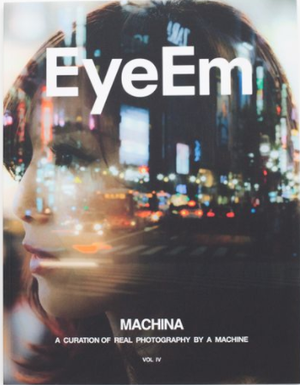 The publishers of EyeEm Vision turned to a computer to curate an issue of their print magazine. The results are stunning.
The publishers of EyeEm Vision turned to a computer to curate an issue of their print magazine. The results are stunning.
Earlier this fall a hot topic making the rounds was “Can algorithms replace human editors?” Discussions were prompted by the rise (and public flame-out) of algorithmically-curated news feeds on Facebook and other media platforms.
Another artificial-intelligence project, MIT’s Nightmare Machine, uses deep learning algorithms of what scares the pants off of us to create images guaranteed to give you the creeps. It works.
Even fonts are being designed by typeface algorithms, with some degree of success.
If a machine can be taught to recognize horror and draw a font, can it also be taught to recognize the aesthetically pleasing, resonant and relevant visuals? Paul Aguirre-Livingston, associate creative director for the photography community marketplace EyeEm, believes it can.
DJ Pangburn of The Creators Project explains how Aguirre-Livingston and his team went about using their artificial intelligence program to curate the fourth issue of EyeEm, “Machina: A Curation of Real Photography by a Machine.”
“On a curatorial level, they wanted to understand what makes a photo beautiful or interesting. On a technical level, they wanted to know how to better index photos for discover and concepting as well as editing and buying,” he notes.
““[It] only felt natural to put our own technology to the test using our 18 million photographers—an amazing talent pool on its own,” Aguirre-Livingston told Pangburn. “The magazine itself was conceived as a way to further showcase the visual stories within our community, and EyeEm Vision really mirrors that effort. Both projects, in my eyes, have a similar mandate: To surface the best, the hidden, the unseen.”
“EyeEm Vision recognizes thousands of objects and concepts like feelings, moods, and so on,” Pangburn explains. “It can also recognize the potential aesthetics of a photograph. To do this, it assigns each photo an aesthetic score from 0 to 100, which Aguirre-Livingston explains more or less ‘predicts’ the ‘curatorial preference of that photo’—so, whether it’s ‘good’ or ‘bad.’”
The results turned up some real surprises for the team, including discovering the hidden talents of one of their own interns, whose work the algorithm pulled as among the best.
Will A.I. replace creative direction? Not likely, as the overall concept of telling a machine what to search for and how to learn starts with human interaction. It seems it can, however, make the process of discovery an easier one. And in the case of EyeEm, it makes for a truly gorgeous and interesting print magazine issue.
